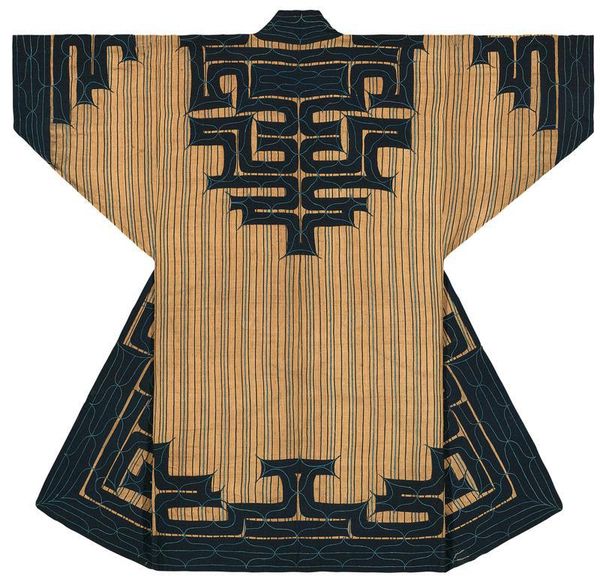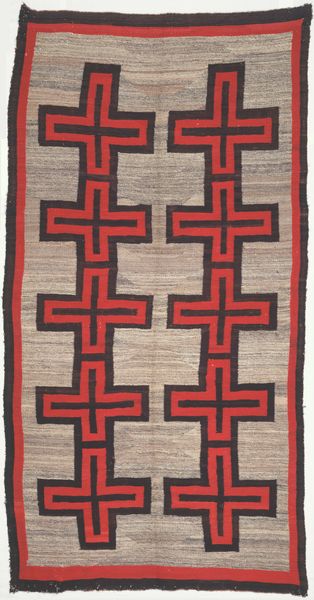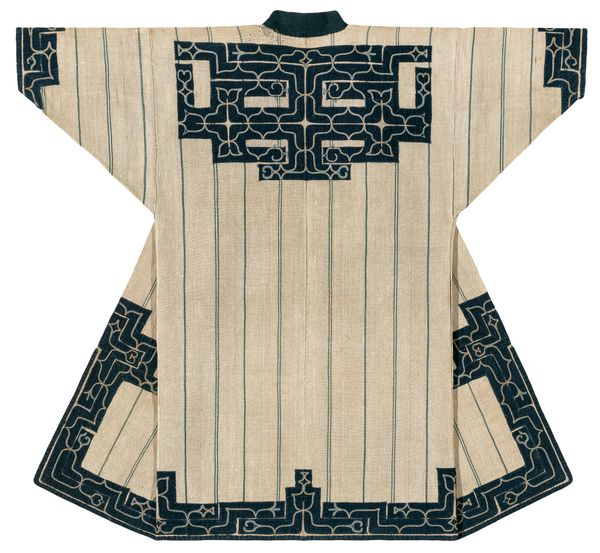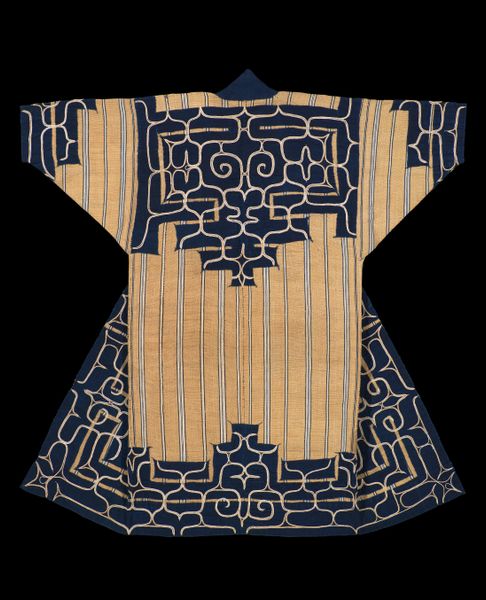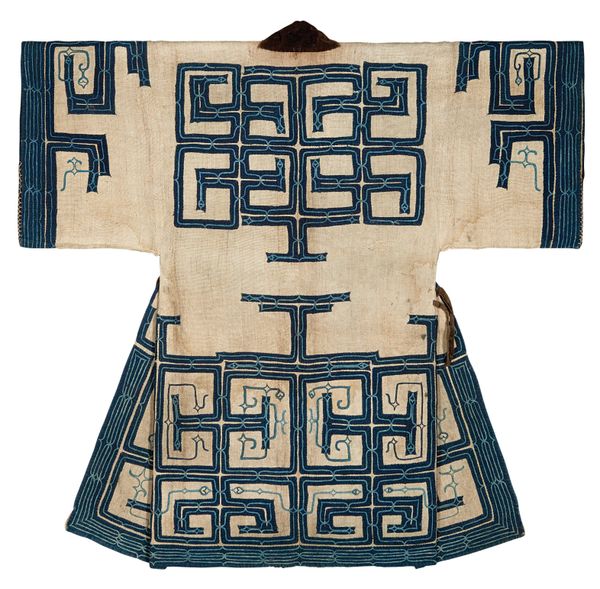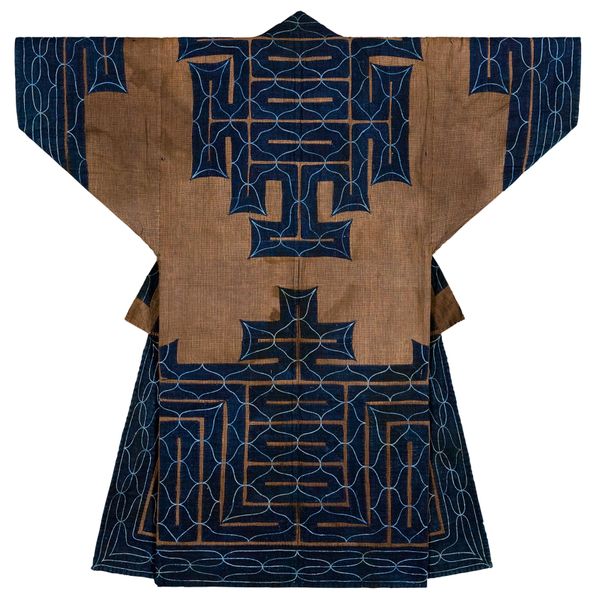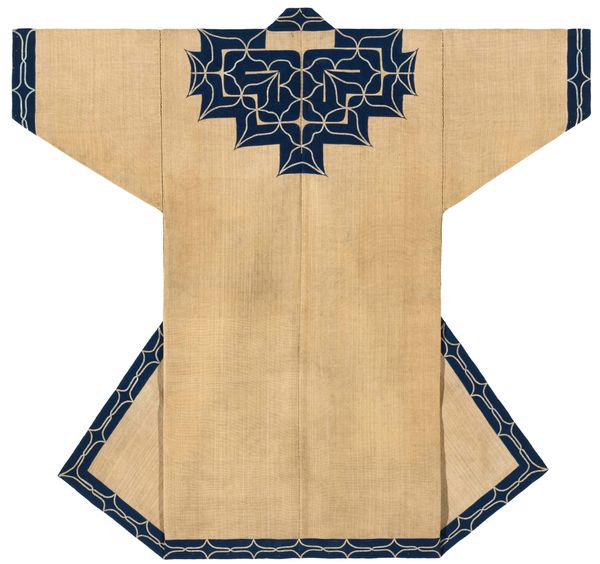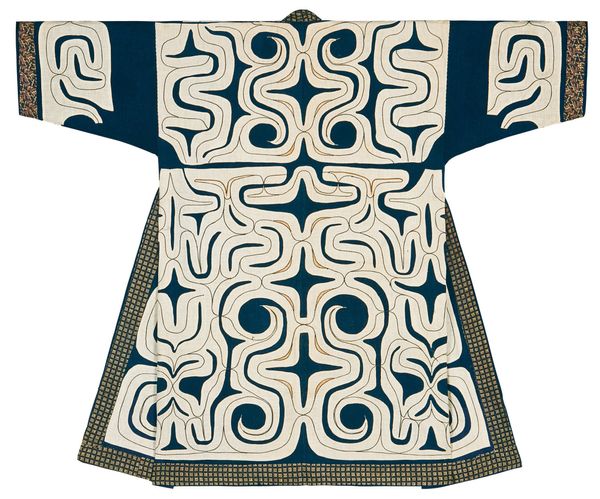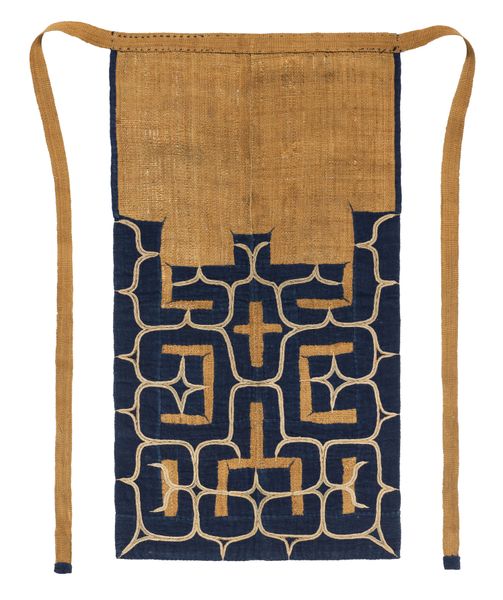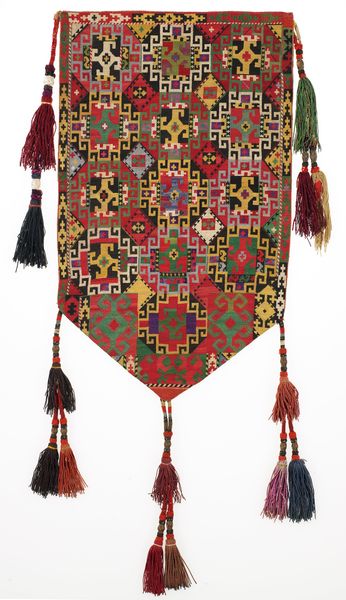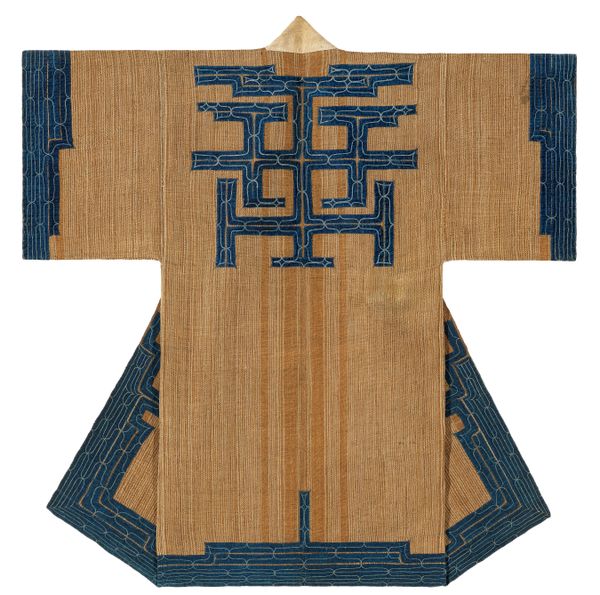
fibre-art, textile
#
pattern heavy
#
fibre-art
#
asian-art
#
textile
#
clothing promotion photography
#
fashion and textile design
#
pattern design
#
fabric design
#
clothing photo
#
pattern repetition
#
textile design
#
imprinted textile
#
layered pattern
Dimensions: 50 × 50 in. (127 × 127 cm) (overall)
Copyright: No Known Copyright
Editor: So, here we have a "Ruunpe Robe with Red," dating from the early 20th century. It's currently at the Minneapolis Institute of Art. Looking at this robe, I'm struck by the density of the pattern. It's almost overwhelming! How do you interpret this piece? Curator: For me, the initial draw lies in its materiality. The textile itself speaks volumes about labor and production. This isn’t simply "clothing;" it represents a significant investment of time and skill. How do you think the construction of the garment, the visible stitching and the layers of fabric, relates to the broader social context of its creation? Editor: Well, I suppose the intense detail might suggest it was intended for someone of high status, someone who could afford the time and skill required for its creation. It seems to move beyond functionality into the realm of display. Curator: Precisely. It’s crucial to consider who would have been involved in the production. Was it created by a single artisan, or was it collaborative effort within a workshop setting? Furthermore, what was the source of the materials? The red dye, for example, might have been a costly import, suggesting trade connections and economic power dynamics. Editor: That makes me think about how even something as simple as a garment can embody complex economic and social relationships. We're not just looking at fabric; we are examining a network. Curator: Exactly. We should also question the divide between "art" and "craft." Is this "fine art" simply because it hangs in a museum, or does its artistic value lie in its craftsmanship, its reflection of cultural values, and the very act of making? Thinking about it this way really opens up interesting lines of enquiry. Editor: I never really thought about clothing this way before, as an artifact embedded in complex material and social relations. It gives me a new appreciation for even ordinary textiles. Curator: Indeed. It pushes us to value not only the finished object, but also the process, the labor, and the web of connections that brought it into being.
Comments
minneapolisinstituteofart about 2 years ago
⋮
Ruunpe are the most intricate and colorful of Ainu robes. Ainu women rendered Japanese trade cotton, as well as recycled silk textiles, into large, multicolored appliquéd designs. A close look reveals the sophisticated, intentional, and painstaking approach Ainu women brought to their work. In some examples, it is clear they viewed patterned cloth as an opportunity to add a vibrant design dimension, juxtaposing or interlayering it with embroidered lines and solid colors.
Join the conversation
Join millions of artists and users on Artera today and experience the ultimate creative platform.
